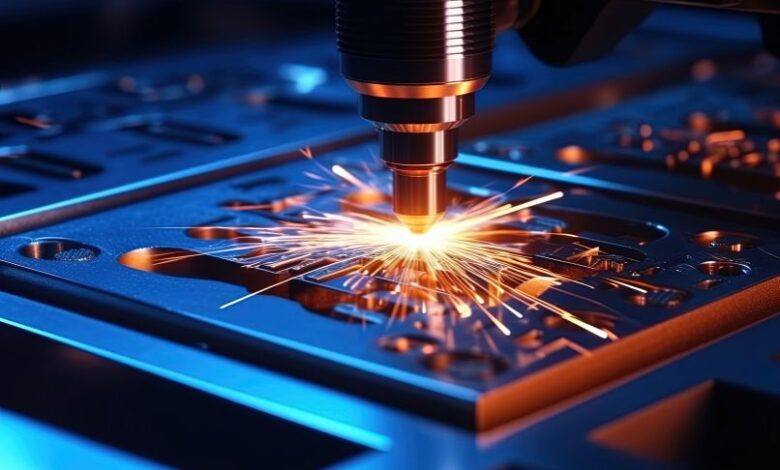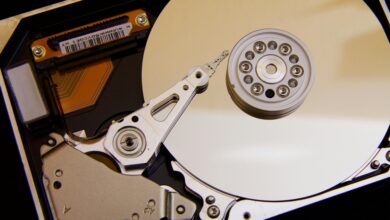Laser Cutting for Hobbyists: Exploring DIY Possibilities

Do you have a passion for creating DIY projects? Projects that show your dedication and creativity?
Listen. There’s a new technology in town: laser cutters. These machines can cut over 1000 intricate designs in one minute. And all you’ve got to do is create your design.
In this post, we’ll show you everything you need to start your DIY project.
Let’s get started.
The Science Behind Laser Cutting
Okay. I know what you’re thinking.
You’re probably wondering: how do laser-cutting machines work? I will explain.
The word laser is an acronym that means Light Amplification By Stimulated Emission of Radiation.
Gordon Gould, an American physicist, coined the term in 1959.
And laser cutting is a technology that uses concentrated light beams to cut, engrave, or etch materials. This technology has its roots in Einstein’s theory of stimulated emission. Look at how it works.
- Step 1: TElectrical energy excites the gain medium (fuel).
- Step 2: After excitations, the electrons in the gain medium emit photons (light)
- Step 3: Mirrors help concentrate the light and direct it towards a small opening. We call this opening the cutting head.
- A CNC system controls the cutting head to follow your design.
This entire process happens within nanoseconds. And you’ll get your desired result within seconds.
That said, laser cutters use different types of gain-medium. And every gain medium has different applications.
Here’s a list of the different types of laser cutters based on their gain medium:
- CO2 lasers
- Fiber Lasers
- Neodymium (YAG) lasers
- Direct Diode Lasers
Materials and Their Potentials
Now that you understand how laser cutters work, the next step is to know the materials you can process with lasers.
The table below outlines the materials you can process with lasers and the type of lasers you need to cut these materials.
Material
Laser Type
Power Level
Metal
CO2, Fiber, and Neodymium
100W – 12000W (And above)
Plastic
CO2 and Direct Diode Lasers
20W – 50W
Fabric
CO2 and Direct Diode Lasers
30W – 150W
Wood
CO2 and Direct Diode Lasers
30W – 150W
Glass
CO2 lasers
10W – 100W
Inspiring DIY projectsCustomized Home Décor
Laser cutters can help you create a unique home. For example, you can etch a meaningful quote into a wooden panel. Paint it to match your living room. And hang it on your wall.
Or you can customize your doors with wooden monograms or nameplates.
Model Making
Have you wished you could craft a piece of wood into a model of your favorite car?
Wish no more. You don’t need to be a dexterous carpenter to be able to create models. You can create dioramas and miniaturized versions of landscapes, buildings, trees, and cars
What you need is a laser cutting machine and a vector file that contains your design.
Personalized Gifts
We’ve all been there. Struggling to choose the best gift for a loved one on a special occasion.
Laser cutters can save you the stress. You can create custom necklaces, earrings, and key chains for your loved ones.
Or you can engrave a quote, wish, or adage into a wooden board and send it to your loved one.
Puzzle Mania
Our brains crave engagement. And some people use puzzles to engage their brains. But you can take it one step further.
Create puzzles. You can create simple puzzles for kids or complex puzzles for adults. That way, you can engage your brain and earn money.
Educational Aids
Audiovisual aids make learning faster. And there are a few better ways than laser-cutting to get custom audiovisual aids.
You can laser cut models of organs, machines and 3D topographical maps from wood and acrylic. These models will enhance your students’ understanding of the subject matter.
Setting Up Your DIY Laser-Cutting Workshop
Ideas are nothing but dreams. You must set up a laser-cutting workspace to convert your ideas to reality.
We’ve outlined a list of tools, devices, and equipment you’ll need:
- Desktop laser-cutting machine: Thunder Laser is your best bet.
- Design software: Learn a design software that outputs vector files. Inkscape is a good free option
- Safety gears: You’ll need safety goggles to protect your eyes from laser light.
- Raw material: Gather a reasonable amount of materials you need for your projects
- Creativity: Create anything and everything you want. The secret to a good project is experimentation.
Tips for Successful Laser Cutting
- Choose materials that are suitable for laser cutting
- Perform test cut to help fine-tune the cutting parameters of your materials
- Learn the parameters you need to cut these materials and achieve optimal results
- Ensure your laser cutter can carry out your project
- Ensure your workshop is well-ventilated
- Carry out consistent predictive maintenance on your laser cutter
Conclusion
Laser-cutting isn’t just manufacturing machines. They are a gateway to improving your productivity and confidence.
What you want to build doesn’t matter. All you need is a reliable laser-cutting machine. With that, you can imagine design and craft anything you want.
The Thunder Laser Nova series is one most reliable products in the market. They have a dual gas-assist system, a hybrid servo, and CE Class 1 and FDA Class 2 certifications.
So what’s holding you back? Buy a Thunder Laser laser-cutting machine and explore the possibilities of DIY laser-cutting



